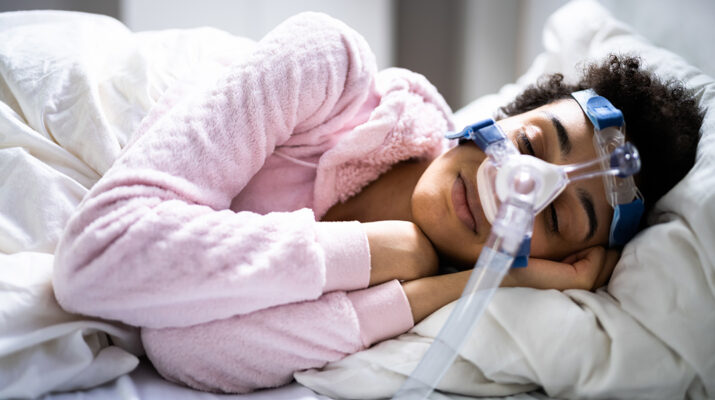By Deborah Jeanne Sergeant
Not all people who snore have sleep apnea, but most who have sleep apnea snore.
In many cases, their doctors prescribe a continuous positive airway press (CPAP) machine to treat sleep apnea. But when CPAP doesn’t seem to help, they do have more ideas to try.
James Murray, doctor of osteopathic medicine and lead physician for sleep medicine for Rochester Regional Health, offers a few tips that can make the difference between peaceful slumber and awakening unrested:
• “Make sure the machine is being used correctly. Given all of the issues that people have with CPAP machines, it makes sense to make sure that the proper use of CPAP is not the underlying issue. Issues like a poorly fitting mask, incorrect pressure settings or lack of comfort features like humidifiers or ramp settings can reduce effectiveness. Sometimes switching to a different type of PAP machine, such as a BiPAP, which uses different pressures for inhaling and exhaling, or an ASV (adaptive servo-ventilation) for central or complex sleep apnea, may provide better results.
• “For patients who cannot tolerate CPAP, oral appliances are a reasonable alternative for some. These custom-made devices reposition the jaw to keep the airway open and are especially useful in cases of mild to sometimes moderate obstructive sleep apnea.
• “Another option is positional therapy, which involves sleeping on your side instead of your back, as symptoms often worsen when lying flat on the back. Avoiding the back is especially helpful when you know that the patient has sleep apnea only or at least predominantly when they are on their back.
• “Surgical treatments may also be considered, particularly if there are anatomical issues contributing to the blockage. Procedures like UPPP (removing tissue from the throat), nasal surgeries or the Inspire implant (a device that stimulates the tongue to keep the airway open) can be effective for certain patients. Surgeries are less common now, although the Inspire device is becoming increasingly common. For patients that really need to be treated, but are unable to wear CPAP, it can really be helpful. It is a pretty involved process, but we have had good success with it.
• “Lifestyle changes play a critical role as well. Weight loss, even in small amounts, can significantly reduce apnea severity. Avoiding alcohol, sedatives and smoking can also help prevent airway relaxation and obstruction during sleep. Additionally, there are descriptions of benefit from some therapies which involve exercises to strengthen the tongue and throat muscles (although not a lot of supportive evidence or clear ways in which we can facilitate this in practice).
• “Underlying medical conditions such as nasal congestion, allergies, hypothyroidism or heart failure can worsen sleep apnea and may need to be addressed alongside other treatments. If CPAP isn’t working, there are several other therapies and strategies available and working with a sleep specialist can help find the most effective approach for each individual.”

